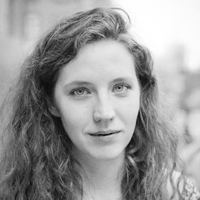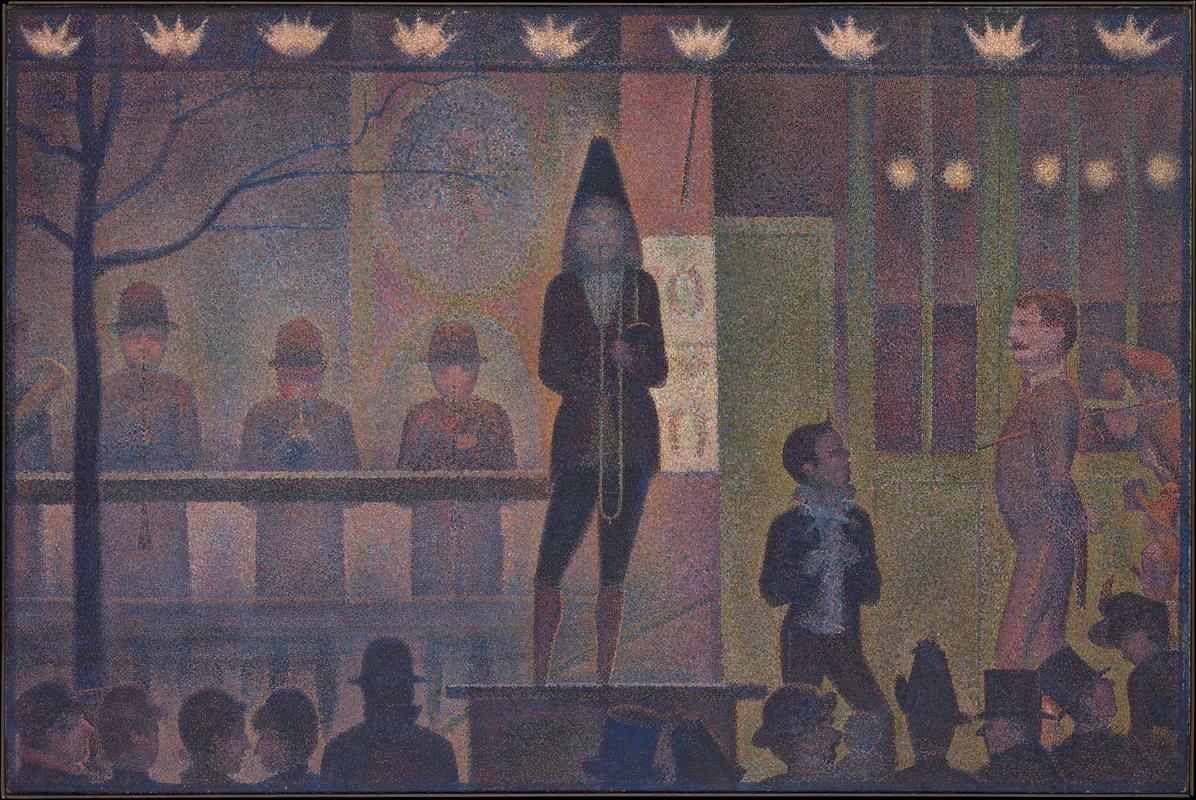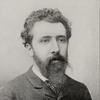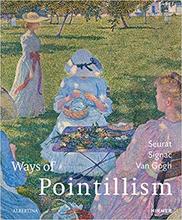More about Circus Sideshow
- All
- Info
- Shop

Contributor
This dotty little scene is a glimpse into Paris nightlife in 1887.
Seurat was known for pointillistic scenes of French leisure, and often painted real places around Paris and the frenchies who hung out there. When he died at age 31, fours years after he made this painting, this was still his only work to show any nocturnal activities on the Parisian streets. He must’ve been trying to keep it wholesome.
Nothing untoward going on here, though. The scene shows the parade de cirque (say it like puh-RAHD duh SIRK to sound real classy), which roughly-but-not-quite translates to “circus sideshow,” of the Circus Corvi. Each year, this circus graced eastern Paris’s Gingerbread Fair just after Easter Sunday for three weeks, near what is now the Place de la Nation.
Parades were a common and long-practiced Parisian ritual that can be dated even as far back as Medieval times, and usually involved musicians and a barker performing on a small stage. They were a universal delight that appealed to aristocrats and riff-raff alike. But these parades weren’t as leering and voyeuristic as the illusions, frights and freak shows of American sideshows. Parisians kept it pretty lighthearted with these free spectacles, which unfolded at the entrance to the circus as a way to lure an audience to the box office. Over to the right of Seurat’s painting, you’ll see a line of convinced circus-goers waiting to purchase their tickets.
As a familiar diversion, parades appeared often in French art of the 19th century as a means of satirizing the political climate of the day. Greats like Honoré Daumier used these circus shows to spoof politicians who, just like the buskers, were selling something that lay obscured behind the curtain.
Sources
- “Circus Sideshow (Parade de cirque).” The Met. Accessed August 30, 2017. http://www.metmuseum.org/art/collection/search/437654
- Smith, Roberta. “Cirque du Seurat at the Metropolitan Museum of Art.” The New York Times. February 16, 2017. Accessed August 30, 2017. https://www.nytimes.com/2017/02/16/arts/design/cirque-du-seurat-at-the-…
- Tuchman, Phyllis. “Life of the Party: Seurat Dazzles at the Met.” ArtNews. February 28, 2017. Accessed August 30, 2017. http://www.artnews.com/2017/02/28/the-life-of-the-party-seurat-dazzles-…
- Fleming, Robin. “Side Notes on the Sideshow.” The Met. April 5, 2017. Accessed September 5, 2017. http://www.metmuseum.org/blogs/in-circulation/2017/seurat
- Thomson, Richard. “Seurat’s Circus Sideshow.” The Metropolitan Museum of Art: New York. 2017.
Featured Content
Here is what Wikipedia says about Parade de cirque
Parade de cirque (English: Circus Sideshow) is an 1887-88 Neo-Impressionist painting by Georges Seurat. It was first exhibited at the 1888 Salon de la Société des Artistes Indépendants (titled Parade de cirque, cat. no. 614) in Paris, where it became one of Seurat's least admired works. Parade de cirque represents the sideshow (or parade) of the Circus Corvi at place de la Nation, and was his first depiction of a nocturnal scene, and first painting of popular entertainment. Seurat worked on the theme for nearly six years before completing the final painting.
Art historian Alfred H. Barr Jr. described Parade de cirque as one of Seurat's most important paintings, its 'formality' and 'symmetry' as highly innovative, and placed it as "the most geometric in design as well as the most mysterious in sentiment" of Seurat's major canvases.
Circus Sideshow influenced the Fauves, Cubists, Futurists and Orphists. It is located at the Metropolitan Museum of Art in New York (Bequest of Stephen C. Clark, 1960, accession number: 61.101.17, Gallery 826).
Check out the full Wikipedia article about Parade de cirque













